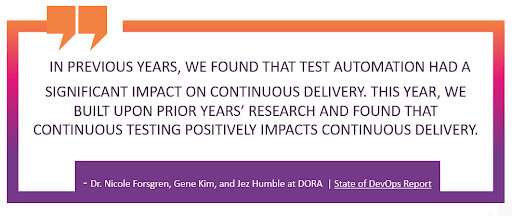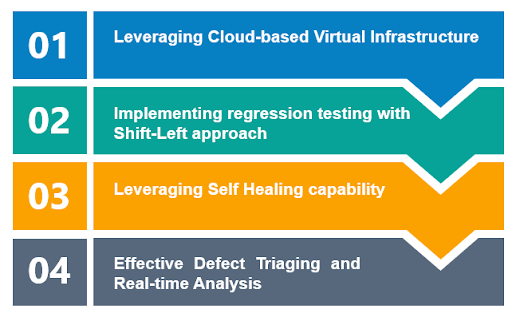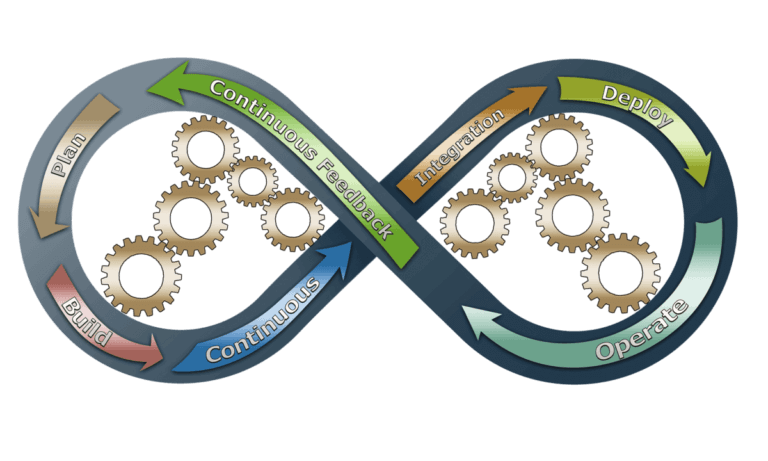Accelerate Success with AI-Powered Test Automation – Smarter, Faster, Flawless
Start free trialIntroduction
Organizations are expected to develop fast, test faster and release software even faster! The release cycles are shrinking from years to months to weeks to days.
According to the CTR 2019 survey, 58% of respondents deploy daily, or even more frequently. At the JFrog SwampUp conference, Google revealed that it runs over 500 million tests per day. That’s to accommodate over 4 million builds daily.
Although releasing new features and innovations in a fast paced environment is the key objective of every organization, it’s also a challenge to manage the pressures that come with it like the increased risk of defects. With IoT, Cloud and AI technologies ruling the world, there is an increased complexity to develop and test features in such a time-boxed manner.
So, what do you do when your objective is also a challenge? The answer to your quandary – Continuous Testing.
Continuous testing is the process of executing automated tests to provide fast and continuous feedback to the developer and this makes it possible to eliminate testing as a bottleneck for faster software development and delivery.
The Benefits of Switching to Continuous Testing

- Increased Agility – Change is the new constant. A truly agile team has the capability to shift focus quickly and respond rapidly to customer feedback or changes in the market. Continuous testing enables this agility within teams by supporting the shift-left testing approach where testing is done right from the earlier stages of the development cycle. Shifting left enables a continuous feedback loop that allows developer and testing teams to respond to defects and establish better team communication.
- Faster Speed to market – As Agile and DevOps have taken a front seat in the software delivery model, release timelines are shrinking making software releases frequent to the market. This gives less time for test design and maintenance while decreasing the quality of test execution. By Adopting CT, testing no longer needs to be a bottleneck.
- Enhanced user experience – CT enables finding business-critical defects long before they occur as failures in production, ensuring that the defects are identified before they reach the user. This helps in smoother and more predictable releases, thereby enhancing the overall user experience.
Challenges Faced while Implementing Continuous Testing
While continuous testing has a myriad of key benefits, the path to achieve Continuous Testing has its own challenges. The software development teams must take into consideration the following major challenges:
- Lack of Tools: For a variety of products, standard tools to achieve continuous testing don’t exist. Teams often resort to using in-house test automation tools or frameworks which are neither well-documented nor well-maintained. This adds to the woes of the testing team as they now have to struggle with the issues of the tool/framework.
- No Feedback loop: To leverage Continuous Testing, it is important to incorporate feedback on an on-going basis. You need feedback loops in the system that can help you gather feedback in real-time.
- Scalability Issues: It’s a known fact that in this ever-evolving environment, requirements keep changing. Continuous testing depends on the ability to build seamlessly on the effort of past iterations when something changes. Not all testing frameworks/tools may be suitable for scaling purposes, and the lack of support for these can become serious bottlenecks in achieving Continuous Testing.
- Update testing strategy: Maintaining only traditional testing methods and test data management that is not clearly defined keeps continuous testing from reaching its full potential.
- Inability to predict defects and their root causes: Defect Triaging, or root cause identification, is one of the major reasons for delays in releasing new features on time.
The Solution
One way to overcome these challenges in continuous testing and achieve quality at speed is to use advanced testing tools.

Webomates CQ is One Such Tool – a True End-to-End Continuous Testing Platform.
Webomates uses advanced intelligent automation technologies to continuously test your build across platforms and divides, and helps you overcome all the challenges. Following are the core differentiators that help you optimize development, accelerate testing and improve end user experience.
Solving The Challenges of Today by:

Leveraging Cloud-Based Virtual Infrastructure for Testing
Along with the need for testing applications quickly, multiple factors like unreliable testing infrastructure, distributed testing teams, multiple test environments add to the testing team’s woes.
An intelligent way to address this issue is to leverage Cloud-based test environments. These can be made accessible instantaneously on demand, and the testing teams need not manage or maintain the test environments. Another added advantage is that there is no need to spend money on setting up any device labs as all the devices would be available on the cloud. Leveraging cloud-based virtual environments can help resolve a lot of issues related to the availability of test environments for Continuous Testing. Using test automation tools that support test automation workflows on the cloud can further add to these benefits.
Implementing Regression Testing with Shift-Left Approach
With a goal to help organizations achieve accelerated feature velocity, Webomates embeds the Shift-Left approach and carries out software features and regression testing with agility.
As per the scope of the build, Webomates performs verification using CI/CD, Overnight or Full regression. It shortens the regression cycle from weeks to hours.
Leveraging Self Healing Capability
Imagine having the power to learn if there is a change made, and then automatically modify the test automation script to fix the problem. With Webomates Self-Healing Test Automation Framework, you can dynamically adapt the testing scope based on the changes. It helps to move from defect-based resolution to real-time resolution.
Effective Defect Triaging
When done correctly, it can reduce the time between reporting a defect and getting it fixed.
The Way Forward
Continuous testing is a fundamental requirement if you aim to deliver next generation customer experiences. The transformation achieved by applying these approaches is phenomenal. For every incremental build, Webomates CQ can create, execute, maintain, analyze test cases and generate defects for browsers, mobile, Windows and API applications. Exact state of the system in terms of bugs is known after every check in.
With Webomates, you can release at a rapid pace – introduce new features in days or hours, and not months, eliminate Defects early in the life cycle, resolve issues in real-time and gain access to real-time analytics.
Tags: CI/CD, Continous Testing, DevOps, Software Testing

Leave a Reply